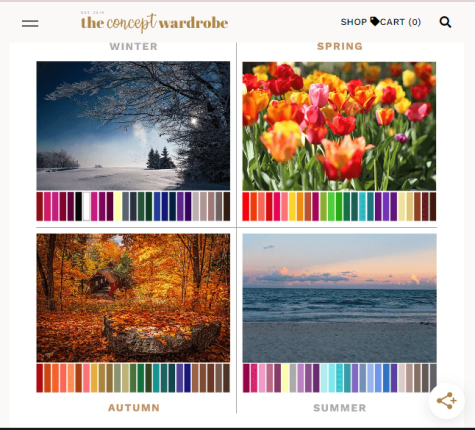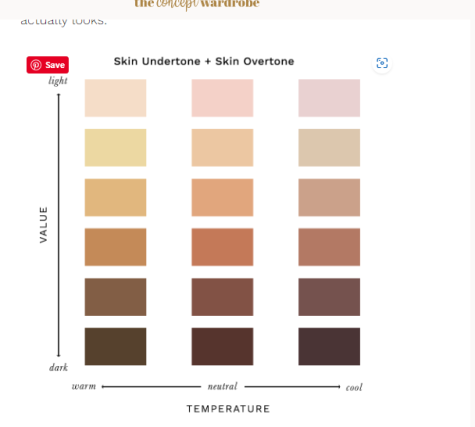What is Seasonal Color Analysis?
Trying to find that perfect outfit collection that you feel confident in can be difficult. Maybe…just maybe finding the right colors that suit you can help! Read along to learn more about Seasonal Color Analysis.
Photo by Priscilla Du Preez on Unsplash
Fashion over hundreds of years has been very popular and continues to be. Finding the colors that you feel best in can bring up your confidence.
Over the past few months, color analysis has become really popular. TikTok and other social media apps have created filters where people can figure out what colors look best on them depending on their appearance and features. Each group of colors is sorted by seasons. The seasons include winter, fall, spring and summer. Out of these four seasons there are smaller branches of the season’s colors.

Color analysis has grown in wider popularity, but color analysis has been around since the 1980s. It was not until the 1980s that season color analysis gained mainstream popularity. It gained the popularity because of the influence of Carole Jackson’s book “Color me beautiful.” Her successful focused on two of the three dimensions used for color analysis. The book’s test helped determine whether or not someone’s coloring was warm or cool and light or dark. In her book, the seasonal type you are depends on two variables. The two variables consist of the undertone of your skin, hair and eyes and how light or dark your overall coloring is (more specifically how light or dark your hair is). If your natural hair is a lighter shade of medium brown, you are either spring or summer. If your hair is darker, you are most likely autumn or a winter. If your skin or hair have a warm undertone, or you are a natural red head, you are either spring or Autumn. Lastly if your skin has a blueish, cool undertone, and your hair is an ashier shade with no golden or red highlights, you are likely a winter or summer.
To break down how to find the right colors that suit you, there are steps to follow. First, you need to find out what hue & temperature you are. Colors are typically split up in warm and cool tones. Yellow, orange and red is normally associated with warm tones and purple, blue, and green are associated with cool tones. When it comes to the seasonal color analysis though, warm skin tones tend to have yellow undertones. Cool skin tones have blueish undertones. Whichever undertone your skin has, it helps determine whether you are warm or cool toned. If your skin tone is neither cool or warm, you probably are a neutral toned. The Concept Wardrobe goes into more detail on how to determine your undertone.

The next step in finding your season is figuring out what value of color suits you. Value is the designates the depth of color or how light or dark the color is. Lighter colors have white added into them. Darker colors have black added to them. This creates shades. Shades are important because let’s say, for instance, that green suits you best, but dark green makes you look sick. The only green that suits you and your appearance better is a light green.
The final step in finding the right season is finding out the chroma of colors that look best. Chroma is what defines a color’s saturation. High saturation is how bright or vibrant the color is. Low saturation is how muted the color is. Think of it this way…if the color is closer to a grey than it is muted and if it further away from a grey it is vibrant.

Most people don’t fall easily in the four seasons. Each season is broken up into 3 sub-groups. They call this version of the color analysis the “12 season color analysis.” Spring is not only warm and light, but it is also bright. Spring is broken up into the three categories: Bright Spring (Bright + Warm), True Spring (Warm + Bright), Light Spring (Light + Warm). The season Summer is broken up into the three categories: Light Summer (Light + Cool), True Summer (Cool + Muted), Soft Summer (Muted + Cool). Autumn is broken up into Soft Autumn (Muted + Warm), True Autumn (Warm + Muted), Dark Autumn (Dark + Warm). Lastly, Winter is broken up into Dark Winter (Dark + Cool), True Winter (Cool + Bright), Bright Winter (Bright + Cool).


